When it comes to photography skills, product photography is one of the most highly demanded.
In recent years, the need for product photographers has exploded.
Not only is product photography required for prints and physical adverts, it also has an online presence.
With the convenience of online shopping, e-commerce is bigger than ever. More people now shop through webpages than in stores.
Quality photography is key for selling products online and therefore, product photography is a highly lucrative skill to have.
The skill is not only highly profitable but also enjoyable.
However, you’ve got the right equipment to capture the amazing shots that turn into sales.
Thankfully, there are plenty of cameras on the market that are perfect for product photography.
The camera that fits your needs depends on what you are using the camera for. This is where you can enter a minefield.
Whilst seasoned professionals at product photography may be looking for the latest and greatest camera, that may not be you.
Perhaps you are just getting started in the business of product photography.
Maybe, you are wanting to capture your own products for social media rather than go professional.
Regardless of the reason why you are in the market for the best camera for product photography, we’re here to help you shoot like a pro.
When shopping for a camera, you want to be clear what features you are looking for.
Consider this your ultimate buying guide with all the hints and tips on how to buy the best camera for product photography.
I have also personally tested many cameras for product photography and found some of the best.
Read on for the low-down on the best cameras for product photography currently on the market.
Best Cameras for Product Photography – Reviews
After years of testing different cameras for product photography, I have found these five cameras to be the best.
All five cameras offer exceptional image quality with a great range of features.
Each camera, however, does have its own pros and cons.
Which camera suits you depends on your personal wants, needs and what you are willing to compromise on.
Any of the following five cameras are a great choice but which one is your camera?
Lucky for you, I’ve highlighted the exceptional features and the downfalls of each to help you decide.
Canon EOS 5DS – Best Camera for Product Photography Overall
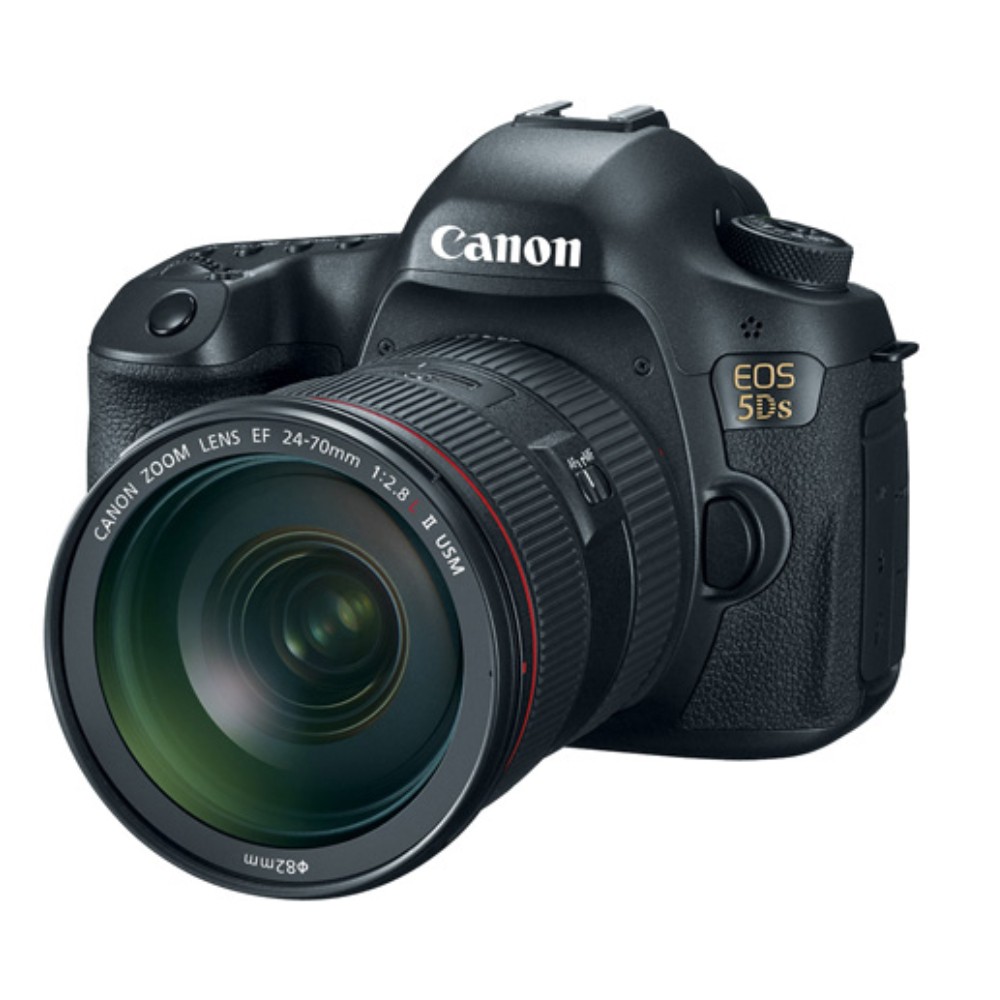
The Canon EOS 5D is designed as a great all-rounder. In that regard, it certainly comes through and is arguably the best camera for product photography out of the five cameras.
The EOS 5D offers the most incredible image quality. It captures intricate detail and true color for photographs of beauty and clarity.
This camera performs extremely well in low lighting conditions. It also produces great imagery in bright light.
Autofocus of the EOS 5D is simply outstanding and seems to instantly focus with no delay.
This camera has also got a monster battery. So, you can shoot regularly for an extended period of time without worrying about your juice running out.
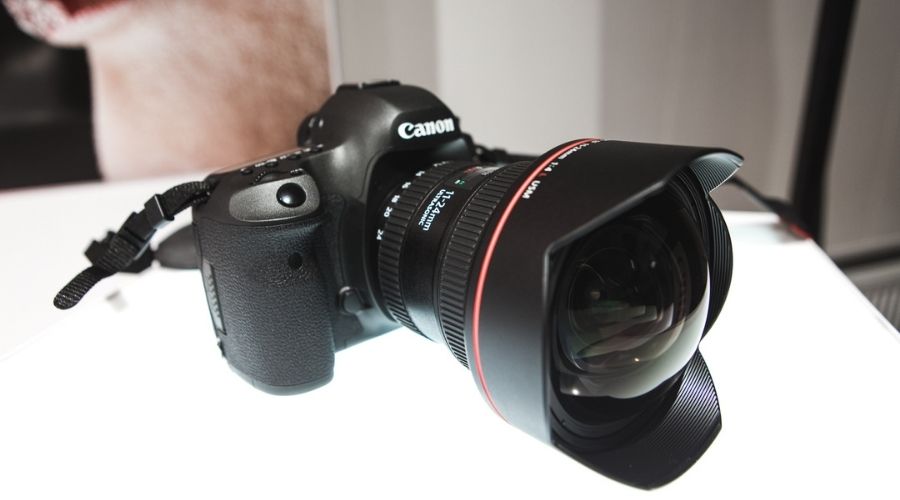
File Size – Average RAW file size of 25mb.
ISO Range – Native ISO of 100-1600 with an expanded ISO of 50-3200.
4K Recording – Captures stunning 4K videos.
Frame Rate – 24, 25 and 30fps at 4K.
Auto Focus – This camera has advanced autofocus technology allowing it to capture moments instantly without any focusing delays.
Exposure Compensation – Shoots well in all conditions producing impressive results in low and bright lighting.
Battery Life – Up to 850 photos. I found my EOS 5D to last 3-4 hours of shooting.
Of all five cameras, the Canon EOS 5D was my favorite.
It stood out in terms of both image quality and battery life whilst also being easy to use.
One drawback was the lag time for previewing images but that is an understandable compromise for the image quality.
“If you are in search of the ultimate camera for product photography, the Canon EOS 5DS is the one I would recommend above the rest.”
Canon EOS Rebel T7i – Best Camera for Product Photography for Beginners
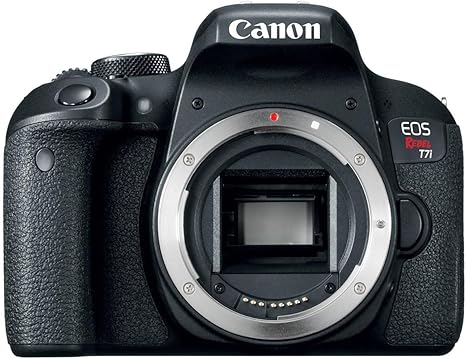
The Canon EOS Rebel T7i is a seriously impressive camera.
So impressive that even owners of previous Rebel’s are quick to upgrade.
With a range of excellent features and superior image quality, the Rebel T7i is an outstanding camera for product photography.
The camera features an articulating screen that allows you to easily see the product when shooting close up.
The Rebel T7i also has an impressive burst mode that captures up to 6 frames per second. This will be helpful if you have to shoot a product in motion.
The camera body is excellent quality making it look premium. However, it remains small and lightweight making it suitable for long shooting sessions or capturing on the go.
Although the build is excellent, a downside of this camera is that it is not weather sealed. This makes it difficult to shoot outdoors in poor weather conditions.
If you are planning to shoot video as well as still imagery, this also may not be the camera for you. The camera is missing a headphone jack which is often needed for recording product clips. It also doesn’t offer 4K recording.
Although it may not be the best camera for video capturing, it is for still imagery.
If you can compromise on videography, the Rebel T7i is a worthy contender. Its features make it one of the leading cameras on the market for photography.
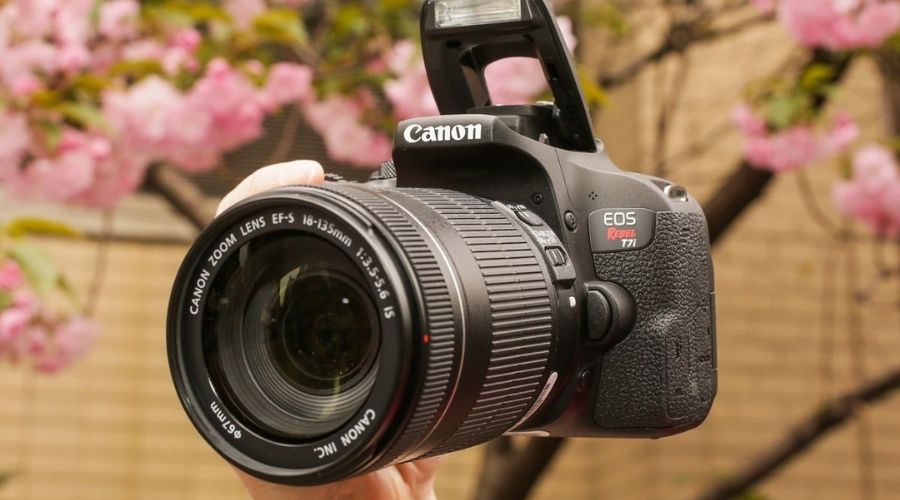
File Size – Average RAW file size of 34mb.
ISO Range – Native of 100-25,600 with an expanded high ISO sensitivity of 51,200. This camera retains great quality up to 1600.
4K Recording – Does not have 4K capabilities. This reduces the recording quality to 1080p.
Frame Rate – Records 1080p up to 30fps. Continuous shooting speed of 6fps.
Auto Focus – The camera comes with a dual pixel autofocus system, that allows you to focus so quickly and cinematically.
Exposure Compensation – The Rebel T7i has easy to use exposure dials making it easy to adjust the lighting on your image.
Battery Life – Up to 820 shots per charge. However, I personally found the camera to have a draining issue. The battery drains even when turned off.
I found this camera to be incredibly easy to use. This makes it perfect for novices and allows even a beginner to capture professional quality photographs.
Likewise, if your product photography is personal rather than professional, I’d also recommend the Rebel T7i as you go-to.
“If you are starting out in product photography, I would say the Canon EOS Rebel T7i is for you.”
Panasonic LUMIX FZ80 – Best Camera for Product Photography for Affordability
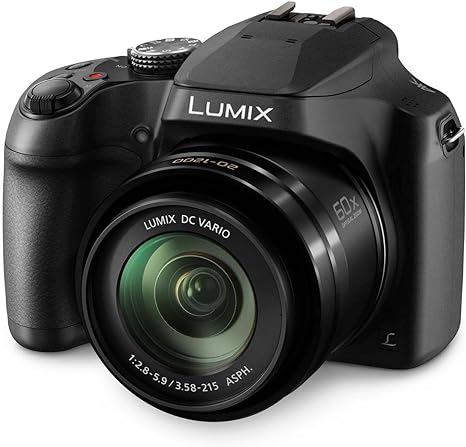
The Panasonic LUMIX FZ80 is a great camera for product photography that offers value for money.
Picture quality is pretty sharp and correctly exposed with decent color reproduction.
This camera also has a pop-up flash with great brightness enhancing the image quality in low light. In addition, the camera has a mount for an external flash for even better lighting.
Plus, this camera is easy to use with a great touchscreen and wifi connectivity.
A let down of the LUMIX FZ80 is its weight. The camera is quite heavy when compared to other DSLR’s of the same range. This may be uncomfortable for long sessions of shooting.
The camera also does not have a tilt out screen and has short burst shooting modes.
However, when you look at the price tag of the LUMIX FZ80, this camera certainly does the job.

File Size – Automatically saves as JPEG but the camera features a RAW converter.
ISO Range – Native ISO 80-3200 with extended ISO of 6400.
4K Recording – Records 4K at 30fps and Full HD up to 60fps. Higher frame rates reduce quality.
Frame Rate – 30fps to 240fps making it great for slow motion product clips.
Auto Focus – Great auto focusing with face and eye detection
Exposure Compensation – Doesn’t come with manual exposure control. While shooting indoors without flash, you may get poor image quality.
Battery Life – Up to 330 shots.
Whilst the Panasonic LUMIX FZ80 is a great camera, it lacks some of the elements that makes other cameras great.
If you are looking for an affordable camera for product photography, this camera would be ideal.
Offering excellent image quality and great features, the LUMIX FZ80 is impressive for the price.
“If you are shooting for personal use or social media, the Panasonic LUMIX FZ80 is great. You can get professional quality imagery for a decent price.”
Nikon D750 – Best Camera for Product Photography for Battery Life
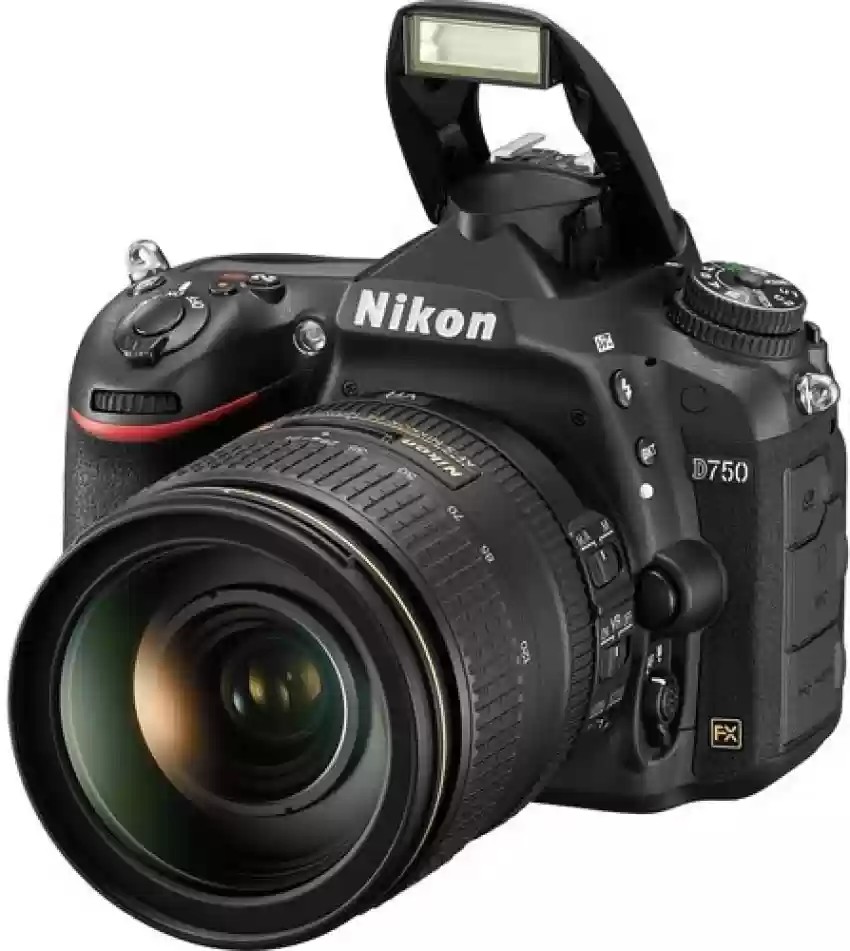
The Nikon D750 is the most popular full frame camera of Nikon’s DSLR collection.
A great improvement on previous Nikons, the D750 has a higher resolution, superior auto focus and advanced video capabilities.
With many improvements, the Nikon D750 hits the sweet spot between a great quality and budget-friendly camera.
The D750 has a full-frame sensor that produces exceptional image quality.
The dynamic range is excellent and works well with the auto focus which performs excellently in low light.
To top it off, the camera also features an anti-aliasing filter. This smooths out jagged edges and enhances the overall image quality.
However, most impressive is the battery life able to capture up to 1230 shots on a single charge.
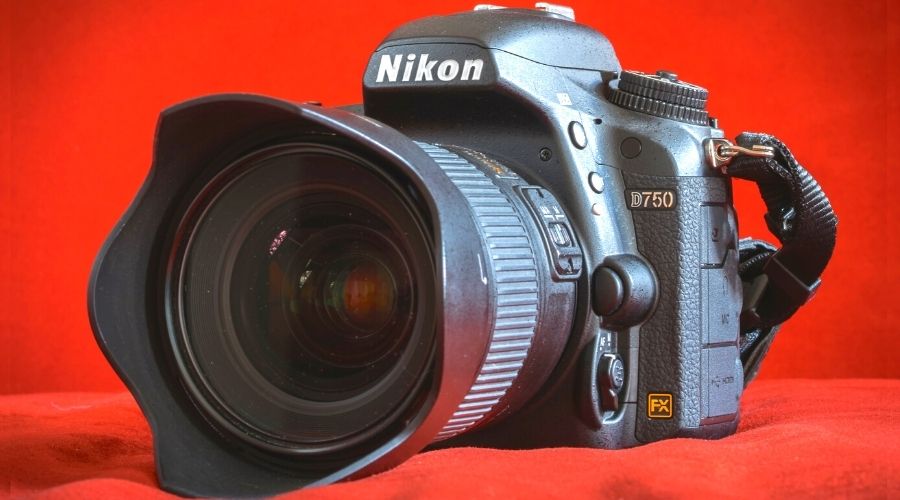
File Size – Average RAW file size of 26.9mb.
ISO Range – ISO of 100-12,800. The D750 has extraordinary performance at high ISO.
4K Recording – Does not capture in 4K. Captures 1080p Full HD at 25-60fps.
Frame Rate – Shoots Full HD at 25, 30, 40, 50 and 60fps.
Auto Focus – Auto focus is slightly slow but works well in low light.
Exposure Compensation – Outstanding performance in difficult lighting conditions with easy to use command dials.
Battery Life – Exceptional battery life of up to 1230 shots.
In terms of image quality, this camera is great for color reproduction and performs well in difficult lighting conditions.
“The main reason I love the Nikon D750 is for its battery life. The D750 was perfect for long shooting sessions with no worry about running low on charge.”
Canon EOS Rebel T6 – Best Camera for Product Photography for Ease of Use

This entry-level DSLR is one of the most user-friendly cameras on the market for product photography.
The lightweight camera is easy to travel with and use comfortably for long shooting sessions.
The LCD screen is incredibly bright and performs well in direct sunlight. This makes it easy to navigate through previews and camera settings even with glaring light.
The best part is that users have full manual control over all video and audio settings.
Of course, no camera is perfect and the Canon EOS Rebel T6 has its flaws.
For starters, the camera does not have a microphone jack. Whilst this may not be important to all product photographers, it may be to those who are also using the camera for videography.
Another downside is that the LCD screen is fixed and does not flip out. This makes it occasionally difficult to shoot close up.
However, for an entry-level camera at a great price, the Canon EOS Rebel T6 is a great camera.
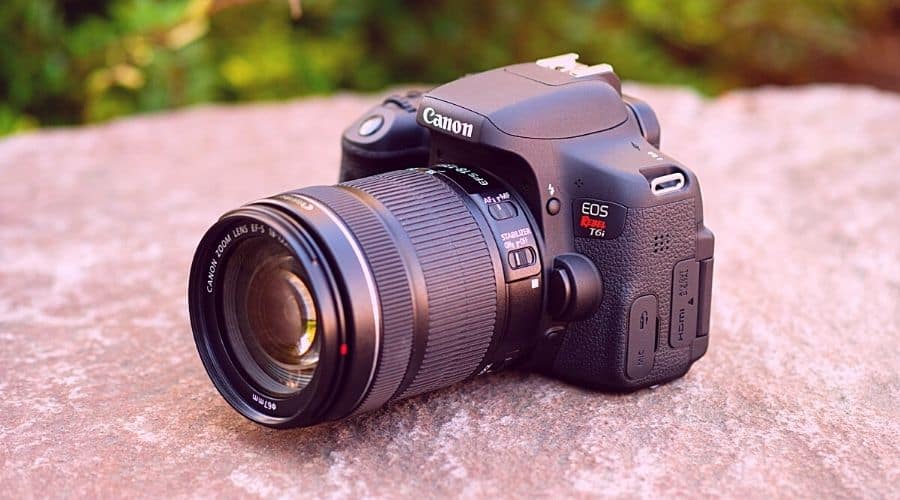
File Size – Average RAW file size is 26.5mb.
ISO Range – Native ISO range of 100-6400 and expandable up to 12,800.
4K Recording – Does not offer 4K recording. Supports 1080p Full HD.
Frame Rate – Only captures Full HD up to 30fps. This camera is not a great choice for videography.
Auto Focus – Great 9-point auto focus.
Exposure Compensation – Excellent manual exposure adjustment.
Battery Life – Up to a maximum of 600 shots. I found this camera to have a decent battery life lasting an hour and a half with continuous shooting.
If I was just getting started in product photography, this camera would be a go-to. It is easy for amateurs to shoot professional quality photos whilst learning camera basics.
“I loved that the Canon EOS Rebel T6 was so easy to use.”
How to Buy the Best Camera for Product Photography
Now we have reviewed five of the best cameras currently on the market for product photography, we need to find which is the one for you.
Every photographer has different wants and needs when looking for a camera.
To find your perfect camera for product photography, you need to weigh up the pros and cons of each camera.
Something you may compromise on, another photographer may not. Therefore your perfect photography companion is unique to you.
If you are shooting for e-commerce or social media, you have the flexibility to compromise on an expensive quality camera. A cheaper alternative will still provide you with results of great quality for online platforms.
However, if you are shooting for print, putting some extra dosh into your camera will be worthwhile. Image quality is essential for print and not something you should sacrifice.
Below are some things to consider when deciding which camera to purchase.
File Size
File size is extremely important to product photography. This is because it can ultimately impact the quality of your image.
If your photos are going to print, a high file size is crucial to retain the quality.
If you’re making prints of your product photos, it’s best to use a high-resolution file for the best quality. Smaller files may not end up looking as good.
With larger file sizes, sure, you get better quality but they also take up more storage and take more time to load.
Therefore, those shooting from e-commerce may benefit from smaller file sizes.
Ultimately, image quality and file size will be reduced upon upload. You can therefore compromise on file size in order to have more storage.
ISO Range
Product photography requires the right balance of light, composition and color for good images.
A camera’s ISO range is extremely important for this.
ISO range determines how reactive the camera is to light, influencing the brightness and contrast of a photo.

Photographers can use this to make their product photos more attractive and inviting.
Setting the right ISO will give you sharper, clearer images and cut down on graininess. It’s an easy way to get your pics looking great!
A camera with a decent ISO range gives you flexibility to create stunning images in any environment.
Auto Focus
Great auto focus is a must-have for product photography. This technology has completely changed the way photographers take pictures of products, letting them get amazing images with ease.

Photographers can accurately capture the details of a product, making sure that all of its elements are in sharp focus.
A lot of cameras with autofocus can keep track of the item you’re shooting, even if it’s moving. That way, you can be sure that the focus stays on the object and your shot looks great. This is great for capturing products in motion such as a moving toy or a vehicle.
Auto focus is a real time saver with no need to manually focus your camera. Simply point and capture.
It really comes in handy when taking pictures in dim lighting since it helps you capture shots without sacrificing the quality.
Auto focus is great for product photographers, helping to get that professional-looking finish with minimal effort.
Exposure Compensation
Setting the right exposure is essential to get that perfect picture. Exposure compensation plays a key role here and should not be overlooked.
Exposure compensation helps a lot for photographers, especially those who take photos of products in different places. There’s no need to stress about the lighting anymore when you know your camera’s got you covered!
Photographers are able to change the amount of light that reaches the camera’s sensor by adjusting the exposure. This impacts how much detail and color appears in the photographs taken.
Exposure compensation is super useful if you’re trying to take great photos in challenging lighting conditions. It helps keep your images crisp, clear and full of detail regardless of a dim or overexposed environment.
Battery Life
One element of a camera that is often overlooked is the battery life.
The majority of cameras on the market have a decent battery life but not all are equal.
If you have long shooting sessions, having a great battery life is critical.
This ensures you can continue shooting without having to worry about running out of charge.
It can be time-consuming to capture the perfect image of a product. Therefore you want peace of mind that your battery is going to last.
If battery life is a top priority, I’d recommend the Nikon D750 for its ability to take an incredible number of shots on a single charge.
Field Depth
Field depth is a great feature of any camera.
When your product is the main feature of the photograph, the background can be unnecessary noise.
You can really make your photos stand out by blurring the background, making the image sharper and more defined.
It’s super helpful for photographers to get that perfect product shot.
Resolution
The camera resolution (measured in megapixels) plays an important role in product photography.
Resolution is particularly important when shooting for print.
The more megapixels, the brighter, bigger, and higher quality print you will get.
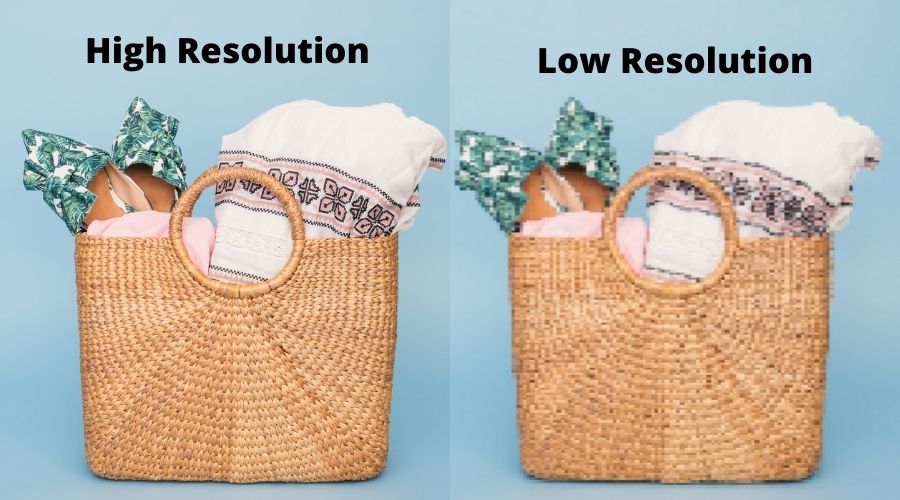
However, if you’re shooting for e-commerce or social media, it is not quite as important.
Uploading commonly reduces resolution anyway. You can therefore compromise on resolution for other features or great affordability.
Lens Quality
Even if your camera comes with a 108MP sensor, it doesn’t mean that your camera lens is poor. You’ll end up chasing the expensive lenses to get sharp and detailed images.

So, if you want to save some bucks, go with the camera which gives you sharp and clear images. Thankfully, most camera manufacturers give great lens options these days.
The new segment of mirrorless cameras has an issue. That they have new mounts that are not compatible with lenses already available on the market.
So before you buy one. Do some research and find the best option which will be compatible with the lenses you’re going to need for your product photography journey.
Sensor
Always Keep in mind your camera sensor is far more important than a megapixel count. Don’t get fooled by the ‘megapixel myth‘.
You can get sharp and clear product photos even with a DSLR with APS-C sensors. Which is much smaller in size compared to a full-frame sensor. It becomes cheaper when you’re keeping it within a budget camera with this sensor.

If you’re going to print a big file, then going with Full-frame sensors is the best option. Although, it’s expensive but offers you high-quality images and video with fine-toned details.
So, if you want high-end photographs and budget isn’t an issue. I’d suggest you go with a full-frame sensor. An APS-C sensor also isn’t a bad choice for product photography.
Best Camera For Product Photography – My Verdict
Any of the five cameras reviewed are great for product photography.
However, the standout camera is the Canon EOS 5D.
I found this to be the best all-rounder and my favorite camera for product photography overall.
With its impressive battery life, image quality and auto focus, this camera wins my vote for the best camera for product photography.
Canon EOS 5DS – Best Camera for Product Photography Overall

On the other hand, the Canon EOS 5D may not be the one for you.
If you are a beginner, the Canon EOS Rebel T7i could be a more suitable option.
Alternatively, if you have a budget to stick to, the Panasonic LUMIX FZ80 is a great product with an affordable price tag.
Whichever camera you choose, may sure you have considered what is important for you to have in a camera.

